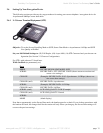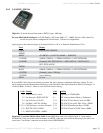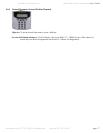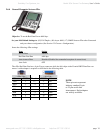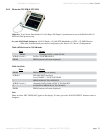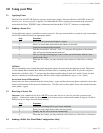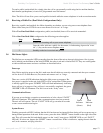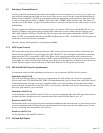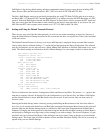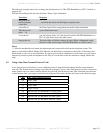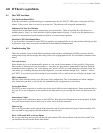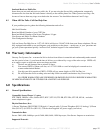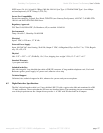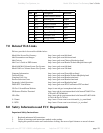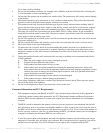GateWay Fax Systems, inc. Model 90si Secure Fax Gateway User's Guide
www.gwfs.com, 877-951-9800, info@gwfs.com help line: 877-951-9814 page 22
37 Selecting a Transmit Protocol
As always, the 90si automatically determines and switches to the correct protocol as a receiver. So, as usual, you
must select the transmit protocol that you wish to use. There are two ways to do this; using the Default Protocol
Setting (Send via HOOK, 1, START) or by manually dialing the appropriate transmit protocol's One-Time Code
as you are sending the fax (Send via HOOK, "One-Time Code", START). When using the One-Time Codes, in-
sure that your Secure Phone / Crypto's Secure Data mode is set correctly for the mode you choose (Sync or Async
& Baud Rate).
The 90si supports two different secure fax protocols plus a few subsets; SCIP Async and Mil-Std-188-161 (syn-
chronous). With the Async protocol the user must select a baud rate or speed of which the 90si supports four;
2400, 4800, 9600 and 19200 bps. The Mil-Std-188-161 protocol has four subsets; Handshake with FEC, Hand-
shake w/o FEC (recommended), Broadcast with FEC and Broadcast w/o FEC. As the Mil-Std-188-161 modes are
synchronous, baud rate selection is automatic.
The 90si's factory default protocols is Asynchronous 9600bps.
371 SCIP Async Protocol
The Async protocol has been around since the late 1980's, however it has never been widely used until the pro-
duction release of the KSV-21 Crypto Card for the STE. The KSV-21 does not support synchronous secure data
modes when the STE is connected to a PSTN line. While it does support synchronous when connected to an
ISDN line, the overwhelmingly large number of STE's connected to PSTN lines will drive most secure fax users
to this mode. As a result, the 90si comes with the Async Protocol (with a baud rate of 9600 bps) set as the factory
default. The 90si supports Async baud rates of 2400, 4800, 9600 and 19,200 bps (bits per second).
372 Mil-Std-188-161 Protocols (Synchronous)
As mentioned earlier, the 90si implements four avors of the synchronous Mil-Std-188-161 protocol:
Handshake with FEC Off
This is the only Mil-Std-188-161 protocol we recommend for use with desktop (non Tactical) cryptographic
devices such as the STE, OMNI and SECTERA. The handshaking that it gets its' name from come in the form of
"acknowledgements" from the receiving fax machine which occur at the beginning of the transmission and be-
tween each page. Forward Error Correction (FEC) is not necessary with these cryto devices because they provide
their own, quite effective, error correction.
Handshake with FEC On
As described above but with FEC turned on. This error correction technique adds about 20% more data to the im-
age data but allows operation on noisy communications links with a Bit Error Rate of up to 10
-2
.
Broadcast with FEC Off
The broadcast mode was designed for point-to-multipoint battleeld radio networks and is a poor choice for mod-
ern secure telephone networks. Requiring no response from the receiving secure fax, the sending secure fax has
no way of knowing if the transmission was received.
Broadcast with FEC On
As described above but with FEC turned on.
373 Full and Half Duplex




